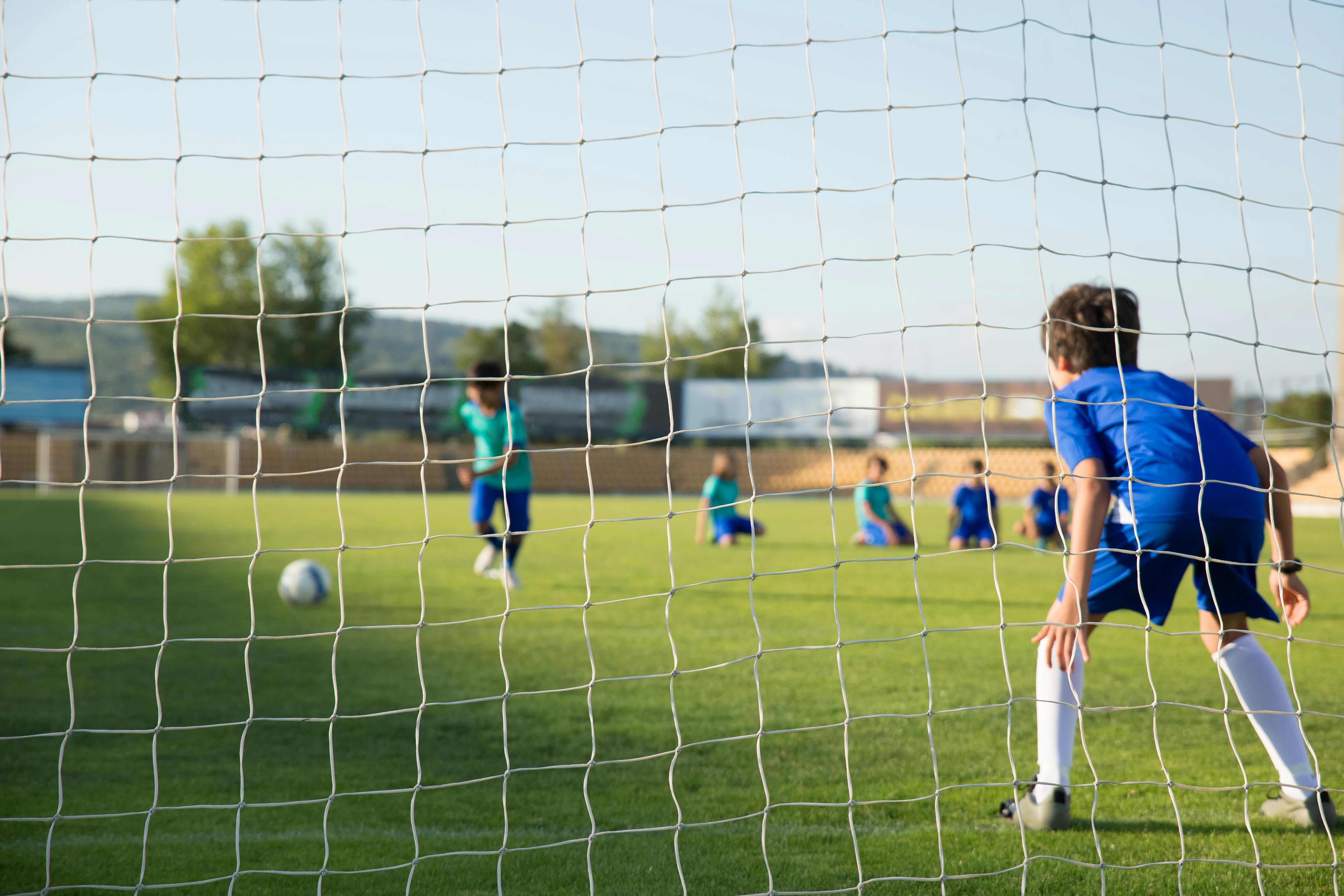A high school soccer game typically lasts for 80 minutes and is split into two halves. Each half is 40 minutes long, with a short break of 15 minutes between the two halves. The game may end earlier if one team is winning by a large margin, or if the referee decides to end the game early due to weather or other safety concerns.A high school soccer game typically lasts for 80 minutes, which is divided into two halves of 40 minutes each. There may be extra time added on to the end of the game if necessary.
Determining the Length of a High School Soccer Game
Determining the length of a high school soccer game is an important part of ensuring that the sport is fair and enjoyable for all involved. High school soccer games must be of a certain length in order to ensure the safety and enjoyment of all players. The length of a high school soccer game can vary depending on the specific rules and regulations set by each governing body, but there are some basic standards that are generally accepted.
The most common length of a high school soccer game is 80 minutes. This includes two 45-minute halves with a 15-minute half-time break in between. Depending on the league or tournament rules, teams may also be allowed to take two 30-second timeouts per half. If any stoppage time needs to be added due to injuries or other delays, it will be added at the end of each half for an additional 1-2 minutes.
In some cases, games may have shorter or longer lengths depending on the circumstances. For example, if a team is playing back-to-back matches or if weather conditions require it, game lengths can be adjusted accordingly. In addition, some leagues may opt for shorter game lengths such as 70 minutes instead of 80 minutes in order to accommodate teams with limited resources or to provide more playing time for younger players.
No matter what length is chosen for a high school soccer game, it is important that all players understand and abide by the rules and regulations set forth by their governing body in order to ensure fairness and safety for everyone involved. By following these guidelines, everyone can enjoy an exciting and competitive match of high school soccer without any unnecessary risks or complications.
Factors That Affect the Length of a High School Soccer Game
The length of a high school soccer game can vary significantly, with some matches lasting only an hour and others lasting two hours or more. There are several factors that can affect the length of a high school soccer game, including the number of players on each team, the quality of play, weather conditions, and the number of stoppages in play.
The number of players on each team is an important factor in determining the length of a high school soccer game. Generally speaking, the more players on each team, the longer it takes for them to complete their offensive and defensive strategies. This can lead to games that take longer to finish than ones with fewer players on each side.
The quality of play is also an important factor in determining the length of a high school soccer game. If two teams are evenly matched and both have good technique and communication, then they will usually be able to complete their strategies quickly and efficiently. This will lead to quicker games than if one team has inferior technique or lacks communication.
Weather conditions can also have a significant impact on the length of a high school soccer game. If it is raining or snowing heavily, then teams may not be able to play as effectively as they would otherwise due to slippery surfaces or reduced visibility. These conditions can lead to longer games as teams struggle to adjust their strategy to deal with these issues.
Finally, the number of stoppages in play can also affect the length of a high school soccer game. If there are lots of fouls or injuries during a match, then this could lead to games taking longer than usual as referees have to deal with these issues before continuing play. Additionally, if there are frequent substitutions being made by either side during matches then this could also add extra time onto games as teams adjust their line-ups accordingly during breaks in play.
Overall, there are many factors that can affect the length of a high school soccer game such as the number of players on each team, quality of play, weather conditions and number of stoppages in play. By understanding these factors it is possible for coaches and referees to better manage their expectations when it comes to how long matches will last for in order for them to be completed successfully and without any delays or disruptions during gameplay.
Standard Length for a High School Soccer Game
The standard length of a high school soccer game is 80 minutes. This includes two 40-minute halves, with a 5-10 minute break in between. Each half is divided into two 20-minute periods, and there is an additional 15-minute halftime break. The game will start at the scheduled time and will end after 80 minutes regardless of how much time has been used for stoppages or injuries. Some states may have different regulations, so it’s important to check the rules before the match.
In the case of overtime, two periods of 10 minutes each may be added at the discretion of the referee if the score is tied at the end of regulation time. If no winner is determined at this point, then a penalty shootout can be used to decide who wins the match.
It’s also important to note that depending on where you live, high school soccer games can vary in length as some states have different rules and regulations regarding game length and overtime periods. It’s best to check with your local league or governing body to make sure you follow all applicable guidelines before starting a match.
Average Time for a High School Soccer Game
High school soccer games typically last for 90 minutes in total, with two 45-minute halves. This is the same length of time as a professional soccer game. The amount of stoppage time, however, can vary greatly from game to game. Depending on the number of substitutions, injuries, and other delays, the actual length of the game can be much longer than 90 minutes.
The halftime break typically lasts 15 minutes, although referees may choose to extend it if there are any extenuating circumstances that require more time. Additionally, most leagues also allow for a 5-10 minute break between the end of regulation and any overtime periods that are necessary.
Referees are responsible for keeping the game running on schedule and ensuring that no team has an unfair advantage due to delays or stoppage time. Stoppage time is typically added at the end of each half in order to make up for any time lost during the course of play. Referees also have the power to suspend or end a game prematurely if conditions become unsafe or if one team gains an unfair advantage by playing overly rough or aggressive tactics.
All in all, it is difficult to provide an exact answer on how long a high school soccer game will last since there are so many variables that can affect its duration. However, generally speaking, most games will last around 90 minutes plus any additional stoppage time that is necessary.

Maximum Length for a High School Soccer Game
High school soccer games are usually limited to a certain amount of time, depending on the state’s rules and regulations. In most states, the maximum length for a high school soccer game is 80 minutes, split into two 40-minute halves with an intermission in between. Depending on the state, some games may be extended due to extra time or penalty kicks.
The length of the game is closely monitored by referees and officials. It is important that all players stay within the allotted time limit so that the game can be finished in a timely manner. An additional 10-15 minute halftime is also usually allowed in order to allow teams to make adjustments before the second half begins.
If a game becomes too long due to delays or extra time being added, it can become difficult for players to maintain their energy and focus on playing. Additionally, games that go beyond their allotted maximum length can cause delays for other teams who are scheduled to play afterwards. Therefore, referees and officials must ensure that all games stay within their allotted maximum length in order to ensure fair play and avoid further delays.
Minimum Length for a High School Soccer Game
High school soccer games are typically set to last for a certain amount of time, depending on the specific league’s regulations. Generally speaking, most high school soccer games will last at least two 45-minute halves. This can be extended to either two 50-minute halves or even three 30-minute thirds, depending on the league’s rules.
In some cases, the length of the game may be subject to change depending on various factors like weather conditions or if a team is significantly ahead in score. For example, if one team has an overwhelming lead by halftime, then the referee may decide to shorten the second half in order to avoid further embarrassing the losing team.
In addition, some leagues may also stipulate that overtime periods must be included if the score is tied after regulation time is up. Overtime periods can vary in length from 5 minutes up to 15 minutes or more depending on the league’s rules and regulations.
Overall, most high school soccer games are usually set for two 45-minute halves with an additional overtime period added if needed. This ensures that each team has enough time to compete fairly and puts everyone on an equal playing field throughout the course of the game.
Does Half Time Length Affect the Overall Duration of a High School Soccer Game?
When it comes to high school soccer games, the soccer halftime duration explained is a crucial factor. The length of the halftime can affect the overall duration of the game. With a longer halftime, the game duration is extended, and teams may need to manage their energy and focus differently.
Youth vs. High School Soccer Games
The game of soccer is popular among youth and high school players. While there are some similarities between the two, there are also some distinct differences. For starters, youth soccer games tend to be more recreational in nature, while high school soccer games tend to be more competitive and intense. Youth soccer games typically involve less strategy and fewer rules than their high school counterparts. Youth players are usually allowed more freedom on the field to explore their individual skills and creativity, while high school players must adhere to a set of specific rules and tactics set by their coach.
Another significant difference between youth and high school soccer games is the size of the teams and fields. Youth soccer teams typically consist of fewer players than high school teams, which allows for a smaller field size and faster-paced game play. High school teams usually have larger fields with more players, creating a slower-paced game that requires more strategy from both coaches and players alike.
The level of physicality is also a major distinction between youth and high school soccer games. In youth soccer, physical contact is relatively rare and accidental contact is often penalized with caution cards or warnings from referees. In contrast, physical contact in high school games is much more frequent as players battle for possession of the ball or try to outmuscle their opponents for position on the field. Additionally, referees tend to be stricter when it comes to enforcing fouls in high school matches than they are in youth matches due to the increased intensity of play.
Finally, the age range of players competing in each game can be a major factor when comparing youth vs. high school soccer matches. Youth teams typically include children aged 8-14 years old while most high school teams include teenagers aged 14-18 years old. The increased maturity level that comes with playing at an older age can make a huge difference on how effectively teams play against each other as well as how well they perform overall on the field during competition.
Overall, while there are certainly similarities between youth and high school soccer games, there are also several distinct differences that can make them unique experiences for all those involved!

Conclusion
High school soccer games can last anywhere from 60 minutes to 90 minutes. The actual duration of the game depends on a few factors such as the number of stoppage times, the age group of the players, and the rules of the organization hosting the game. Soccer is a sport that is enjoyed by many players and spectators worldwide, and having a good understanding of how long a high school soccer game can be helps ensure that everyone involved enjoys their time.
No matter how long a high school soccer game lasts, it can be an exciting experience for all involved. From watching talented players take to the field to seeing your team pull off an incredible victory, high school soccer games are filled with excitement and anticipation for fans and players alike. With this knowledge, you can make sure you plan your day accordingly to ensure that you don’t miss out on any of the action!

